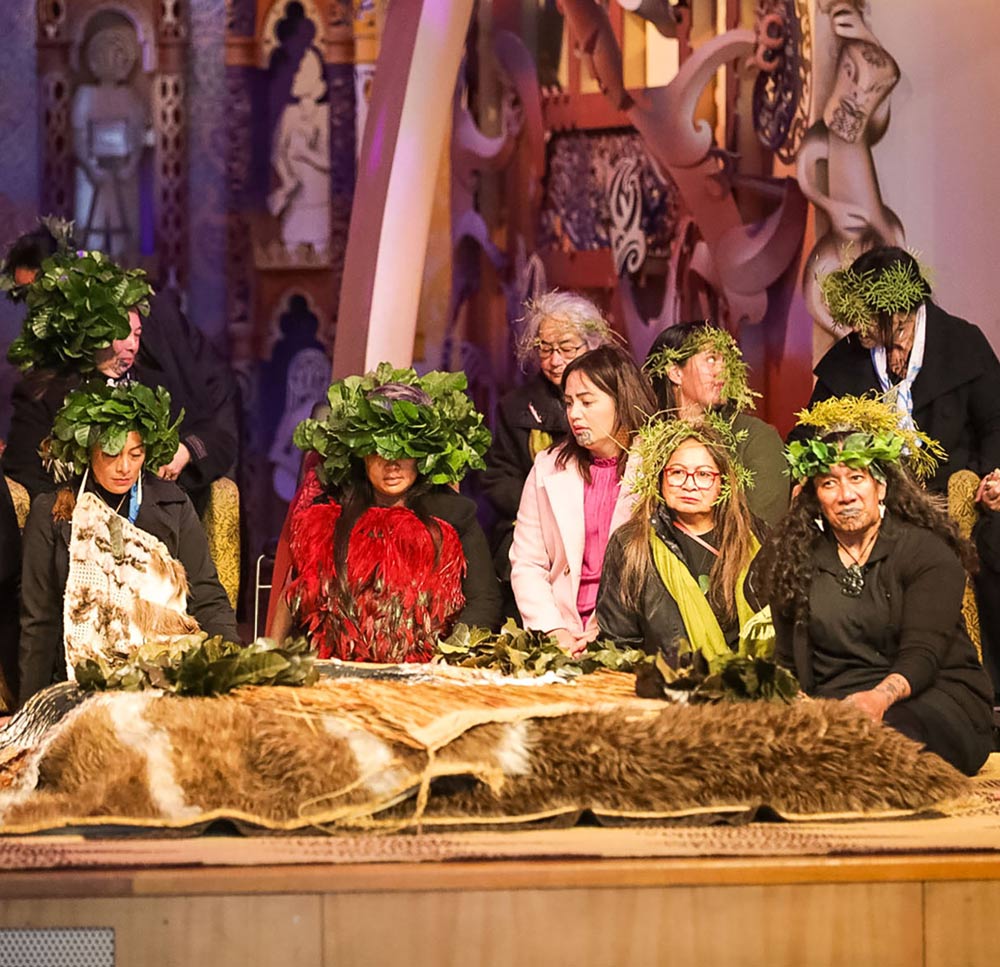

Homeward Bound
Moriori await the final return to the Chatham Islands of human remains recovered from institutions around the world.
By Veronika Meduna
In a sacred resting place at Te Papa Tongarewa, hundreds of Moriori ancestral remains are waiting to make their final journey back home to Rēkohu, the main island in the windswept Chatham Islands group some 800 kilometres east of New Zealand.
Kōimi t’chakat have been arriving in New Zealand over the past year from colonial collections held in museums overseas and universities in New Zealand as part of a long-running effort to repatriate skeletal remains back to their rightful place, with their people.
Like other colonised countries, New Zealand has a painful and shameful history of stolen Moriori and Māori remains, dug up unceremoniously and traded as scientific objects and curiosities by colonial bone collectors and notorious grave robbers serving the contemporaneous thinking that both were inferior people and dying out. Moriori were considered near-extinct and kōimi were taken in such large numbers that the tribe may represent the most collected people in the Pacific.
Bringing the remains home is the ultimate honouring of these karāpuna — ancestors in ta rē Moriori — for Maui Solomon, the tribe’s chief negotiator and lifelong advocate of the correct telling of Moriori history and the reclaiming of culture. “Knowing as I do the tragic history of what happened to my ancestors and the circumstances which resulted in the unlawful removal from Rēkohu all those years ago, helping to bring them home is one of the most important things this generation of Moriori can do.”
In the largest single repatriation of Moriori remains to date, more than a hundred ancestors were returned by London’s Natural History Museum last July. Solomon travelled to London to receive them and to meet the curators who’d been caring for them. “None of them are responsible for our ancestors leaving our shores. What’s important to me is that they played a vital and heartwarming role in their return to their proper home. It’s hard to reconstruct the feeling at the time because it’s such a visceral and experiential thing – it was pretty deep and special to be part of that.”
For Susan Thorpe, a researcher with Te Papa’s repatriation team Karanga Aotearoa and Solomon’s wife, the London visit was the culmination of many years of work. “The London repatriation started in 2007, when I travelled there to represent Karanga Aotearoa and worked with the staff to begin to examine their accession records. It was a collation of records from museums all around Britain. Many of [the kōimi] were not collected by the Natural History Museum itself, but they became the repository.”
“There’s a great deal of not just interest and enthusiasm, but a real, ethical, reciprocal response to return.”
Thorpe could trace the remains to the Royal College of Surgeons Edinburgh, Oxford University, the University College London and private collections, from where they were moved to the Natural History Museum for safe keeping after the Blitz bombings of London during World War 2. They were never displayed there and remained in storage for decades, until the UK introduced a new law to ease the transfer of human remains. “Now, all over the world, particularly in Germany, there’s a great deal of not just interest and enthusiasm, but a real, ethical, reciprocal response to return. It’s beautiful to be part of that.”
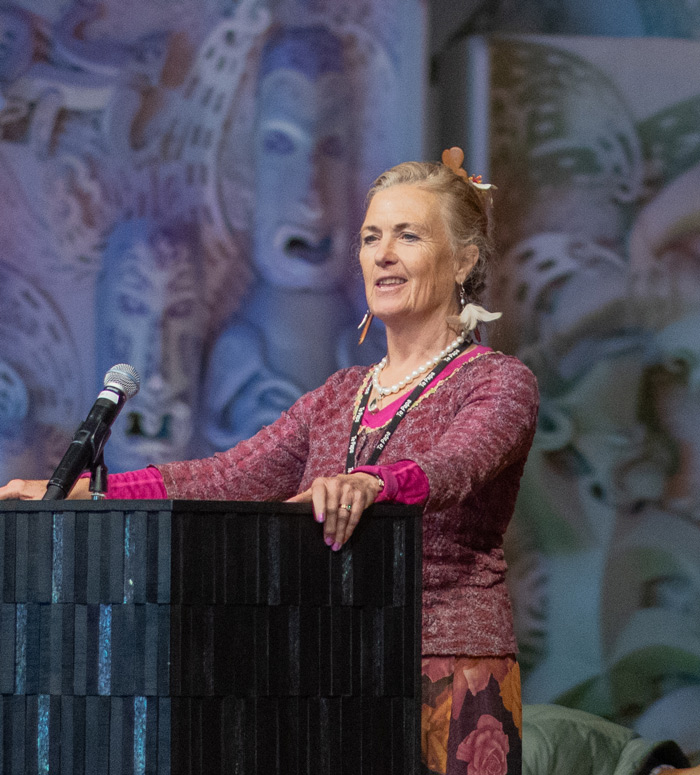
Susan Thorpe is part of Te Papa’s repatriation team, Karanga Aotearoa. Photo: Te Papa Tongarewa
One trail of how these remains left New Zealand leads to Henry Devenish Skinner, who grew up in Taranaki during the 1890s and often joined his father combing the beaches for artefacts. He volunteered to go to war in 1914, fighting in Gallipoli, and later enrolled at Cambridge University to study Moriori material culture in British museums. After he returned to New Zealand in 1918, the first person in Australasia to be appointed lecturer in anthropology, he visited the Chatham Islands to follow his pre-war research interests, challenging the then orthodox argument that Moriori were descended from a Melanesian people. He argued they are Polynesian.
According to his Dictionary of New Zealand Biography entry, Skinner recognised the importance of archaeological evidence but disliked field work and employed others to carry out excavations. Domestic museums started emerging during the 1860s, says Thorpe. “They were connecting with Europe, particularly Britain and Austria, to grow collections of New Zealand material overseas and there was a huge interest in moa bones. Moa became almost a kind of inter-museum currency and so you’ve got lots of letters and diary notes saying, ‘Thank you for that moa skeleton. And by the way, we’ve got a need for some South Sea Islanders’ skulls, can you assist with it?’ And of course, they did.”
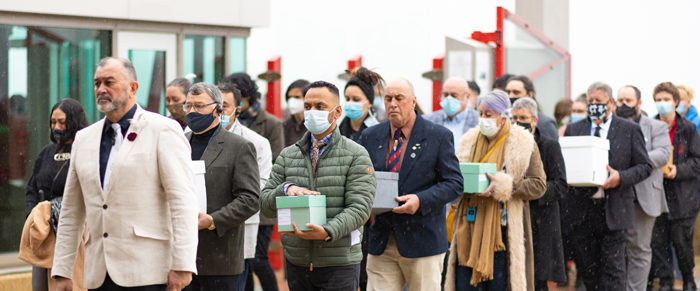
Maui Solomon leads the delegation, carrying the karāpuna returning from museums and university collections on to Te Papa’s marae. Photo supplied by Maui Solomon.
Despite his contribution to the trade of Moriori remains, Thorpe doesn’t want to paint Skinner in a bad light. “He did a tremendous amount to dispel mythology about Moriori but he was a man of his time as well. He didn’t go [to Rēkohu] to take human remains. But when working in archaeological sites that had become exposed it was typical archaeological practice, if remains were uncovered, to add them to the archaeological collections.”
At the same reconciliation ceremony Te Papa held to welcome karāpuna Moriori from London, some 200 remains returned from several museums in New Zealand and the University of Otago’s anatomy collection. The latter goes back to John Halliday Scott, professor of anatomy from 1877 and the first dean of the medical school from 1891. Scott was a medical professor, but his research was physical anthropology. It consisted mainly of the measurements of skulls of people from different populations for the “justification of the white man’s status at the top of the ladder”, says Otago bioarchaeologist Hallie Buckley, who attended the ceremony to issue an apology. “He and his colleagues were responsible for a lot of the collecting and we have evidence from our records of it beginning around 1876 and going right through to 1945. The intentions and the manner in which these [remains] were collected and how research was conducted and how these people were described, to us today is absolutely abhorrent.”
Buckley says it’s “important that we acknowledge that our institutions had a role and I firmly believe that we must account for our professional ancestors’ conduct”.
"How research was conducted and how these people were described, to us today is absolutely abhorrent.”
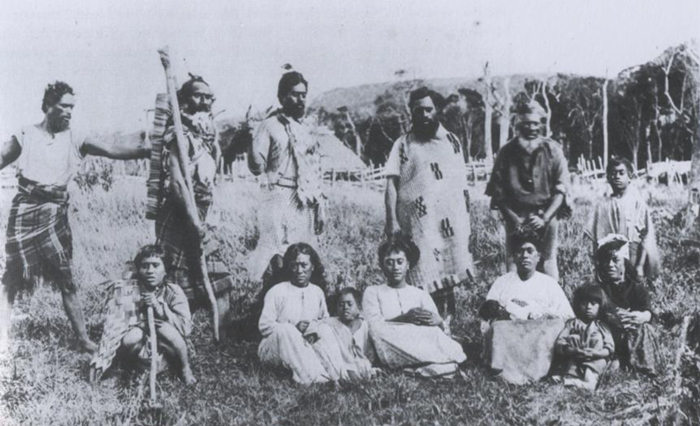
This historic image of Moriori karāpuna was taken around 1877 at Manukau, where Maui Solomon and Susan Thorpe now live on Rēkohu. Photo supplied by Maui Solomon.
Much has changed since then. Buckley’s work is now recognised particularly for her respectful study of remains which treats them as a person whose life story she aims to tell, always working alongside the community to which they belong. “Yes, you’re righting wrongs, but you are also giving them their family back”, she says.
Some Moriori in the anatomy collection are represented only by a single bone. For a few, there are complete skeletons. With permission and encouragement from the Hokotehi Moriori Trust, Buckley worked to reconstruct a biological biography for each of them to return not only their remains but their stories as well.
“Yes, you’re righting wrongs, but you are also giving them their family back.”
From the bones, she could tell whether the ancestors were male or female and what age they were. The teeth tell a story about the types of foods they were eating, oral diseases they may have had and whether they might have suffered from any sort of stress during childhood.
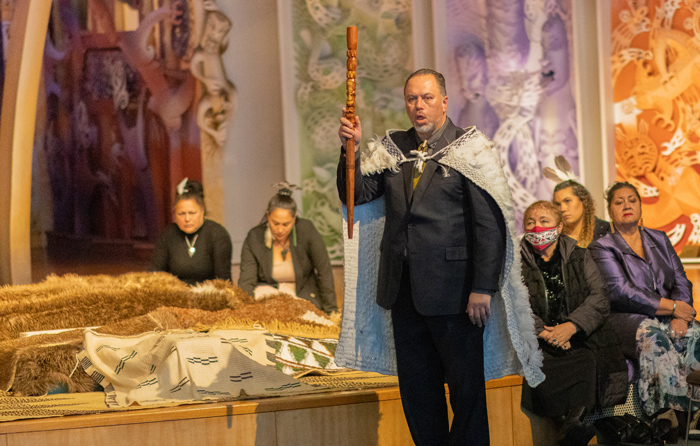
Kiwa Hammond speaking at the repatriation ceremony at Te Papa, when Moriori and Māori ancestral remains were returned. Photo: Te Papa Tongarewa and Veronika Meduna.
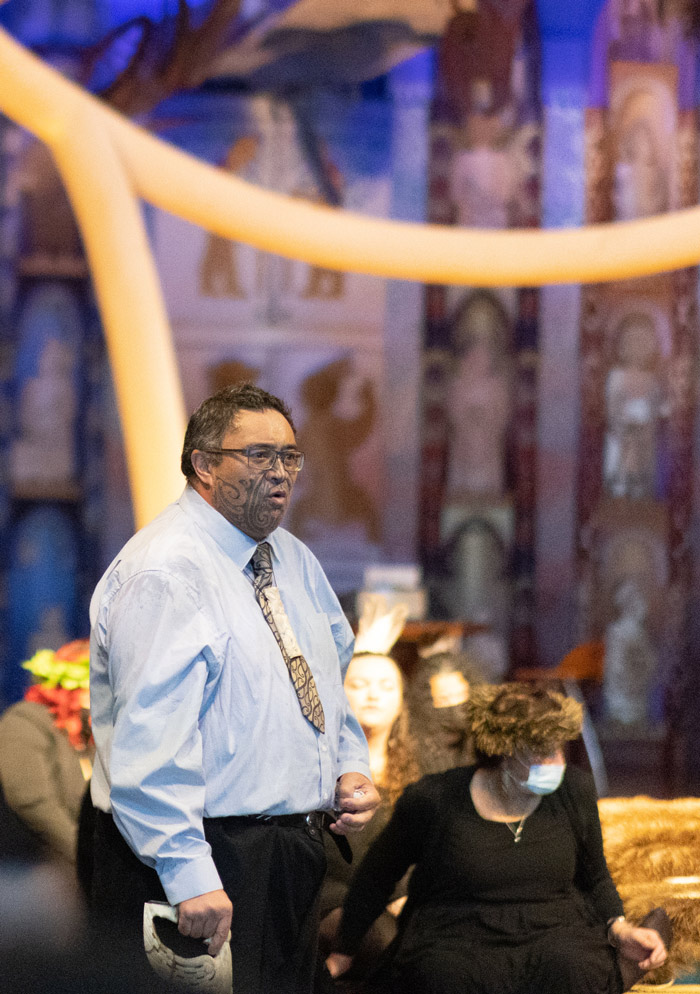
Papa Taharākau Stewart from Tairāwhiti Museum.
Generally, Buckley found people were healthy and very strong, with bones showing evidence of strenuous activity suggesting they were carrying or dragging heavy weights. Many people grew old, and those who suffered fractures received community care for weeks to rest and heal.
Their teeth show wear that suggest they may have used them as a tool, likely to process plant fibres or animal skins. “The humanity of these people was brought back to us through this beautiful work,” says Thorpe. “Moriori were extremely fine and talented weavers. They made sophisticated fishing nets and gear; they wove purse seine nets, baskets, garments and mats amongst other things. We shouldn’t necessarily assume that tooth wear is associated only with food. It’s very common in other cultures around the world where the wearing of skins is necessary for warmth and fibres are used for weaving.”

Kiwa Hammond is a champion of the revitalisation of Moriori language and culture.
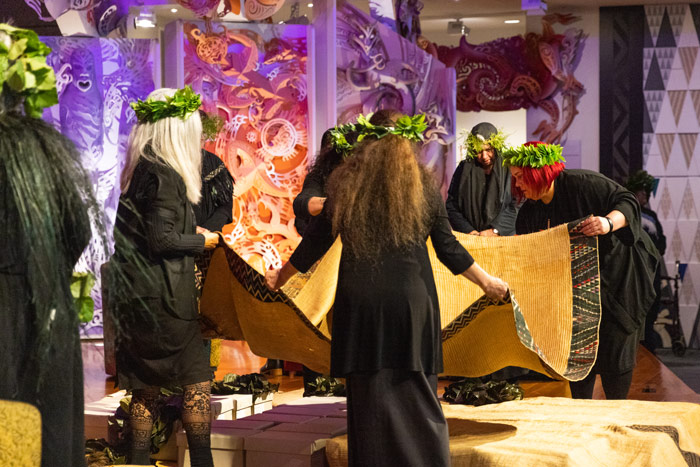
Karāpuna Moriori and tūpuna Māori are covered with kākahu (traditional cloaks) before the ceremony.
Buckley also found that some people suffered from anaemia and scurvy as children, suggesting seasonal dietary shortages of iron and Vitamin C. And there is some bone evidence of tuberculosis and possibly leprosy. The trust didn’t want to carry out invasive analysis of the remains but agreed to explore genetic traces of the bacteria that cause these diseases. “It was always assumed that tuberculosis was introduced by pākehā and they did indeed introduce highly virulent strains [to New Zealand but not on Rēkohu], which were devastating to Māori and Moriori and are still a problem today. But Te Rangi Hiroa [Sir Peter Buck] always argued that, from oral histories, tuberculosis was present pre-pākehā. I have seen skeletal evidence of tuberculosis among pre- European kōiwi tangata and some of the karāpuna and we want to see if this could be closely related to tuberculosis that is carried by pinnipeds – seals and sea lions.”
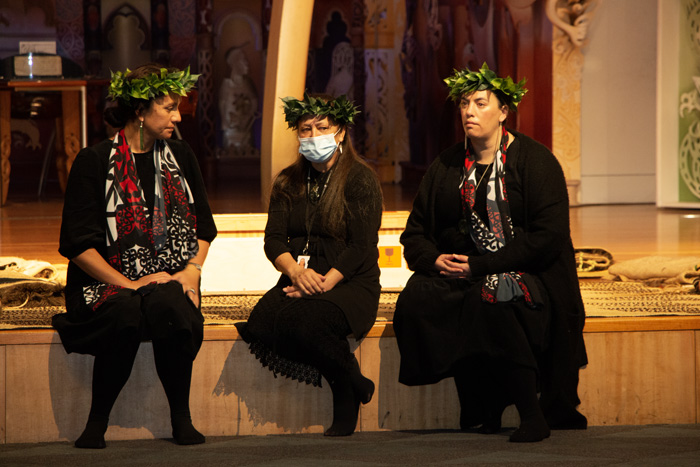
A moment of quiet before the repatriation ceremony.
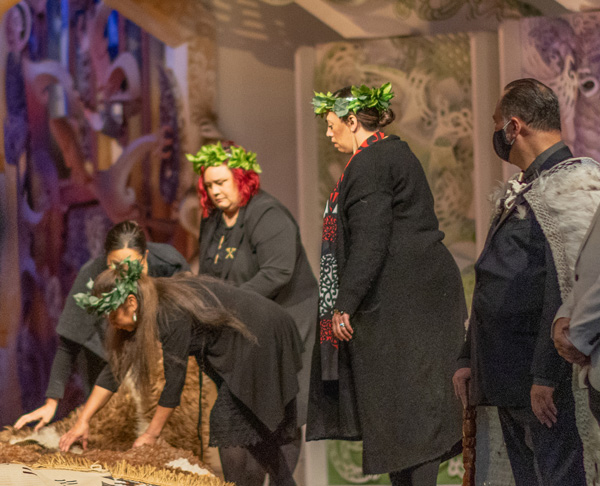
The karāpuna are gathered and covered with cloaks at the start of the ceremony.
But all will depend on which research the trust wants to pursue further. “No anthropological research on human remains has any validity unless it’s done with the knowledge and the support of the community and to answer community-driven questions,” Buckley says.
Moriori, above all else, are a people of peace. For Maui Solomon, the repatriations are part of a wider recovery of culture, language and recognition – and the debunking of long-lived myths. “Five or six generations of New Zealanders have been taught that Moriori were weak and inferior people who occupied New Zealand and got driven out to the Chathams by the later, more aggressive Māori, and then got dealt to and were extinct. And that was what’s been taught in national schools. All we’re asking now is to have the truth taught.”
The true story is of a Polynesian people settling on Rēkohu and other islands in the group almost a millennium ago and developing an egalitarian society which outlawed warfare and killing. This pacifism is pivotal to the historical injustices Moriori experienced, including what Solomon describes as genocide following the arrival of two iwi, Ngāti Mutunga and Ngāti Tama, late in 1835. “We maintained our mana by upholding and adhering to the custom of non-violence and welcoming and looking after these invaders. Our ancestors didn’t know that they were invading and had come to take over the land. They just saw people who are in need, who were sick, unwell from this voyage, and looked after them.” Solomon refers to a letter written in 1862 by Moriori leader Hirawanu Tapu, telling Governor Sir George Grey that “the Māori hid their true intentions from us. It wasn’t until several weeks later that they began to takahi the land, killing and enslaving our people as they went.”
The Crown knew what was happening, Solomon says. “You had people like Bishop Selwyn, who was there in the early 1840s and reporting back, saying there’s gross slaughter and slavery and injustice happening on the island. Other missionaries were reporting the same thing, but out of sight out of mind.”
The killings also aided colonial collectors. “After the genocide of the early 19th century, many of those human remains were just left scattered around. The thought of having suffered the degradation of being killed and eaten, then to be removed offshore and stuck in some foreign institution – how many indignities can a human being endure?”
Moriori gathered from the Chathams and throughout Aotearoa to attend the solemn repatriation ceremony. One of the orators was Kiwa Hammond, who spoke in both te reo Māori and ta rē Moriori, reciting ancient incantations likely familiar to the ancestors whose remains were coming home. Reviving the Moriori language is a challenge. There are no recordings – only descriptions of how it was spoken. For Hammond, the challenge is also personal as he only learned of his Moriori roots 25 years ago. “We are recognised
as being among quite a few families called the ‘lost voices’ because, for whatever reason, our karāpuna were removed from Rēkohu and we don’t have a strong hokopapa [whakapapa] connection to those who remained on the island. There are a lot of families around the country who have a similar story.”
For this reason, Hammond spoke but did not carry any of the boxes containing ancestral bones. “Our purpose here is to carry the [living] people. Our role is to revive and revitalise our rongo [songs] and our karaki.”
“I have committed my life to having the truth about Moriori told and to have justice for Moriori,” Maui Solomon says. “I’ll probably go to my grave not seeing that justice really has been done, but we’ve made a lot of progress.”
Since the large repatriation, Moriori remains have returned from the natural history museum in Vienna from collections traded by Hochstetter and Andreas Reischek, arguably the most infamous grave digger who had no qualms breaking tapu knowingly. In June this year, more remains will be returned by seven institutions in Germany.
“I have committed my life to having the truth about Moriori told and to have justice for Moriori,” Maui Solomon says. “I’ll probably go to my grave not seeing that justice really has been done, but we’ve made a lot of progress.”
Eventually, in two or three years, all karāpuna will embark on the final leg of their long journey home to be laid to rest in a memorial site. “When we take them back to the island, eventually, there’ll be close to 600 kōimi to be returned. And that’s going to be a huge occasion not just for Moriori, but for the whole island.”
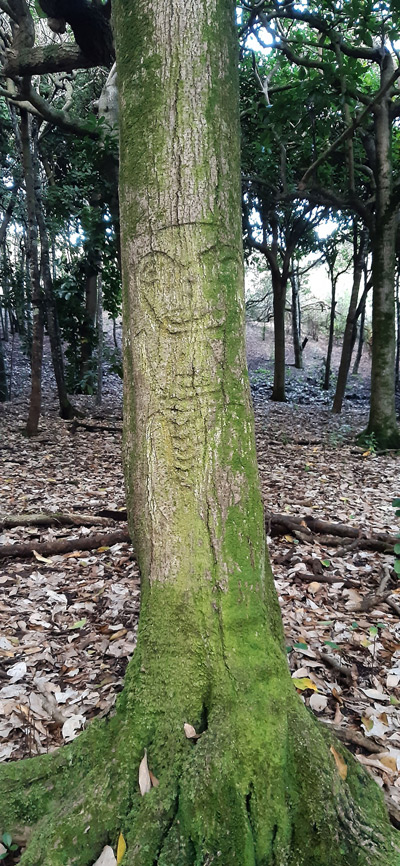
Moriori introduced the kopi (Moriori for karaka) to the Chatham Islands and carved the trunks with symbols of spiritual significance.
Veronika Meduna specialises in writing about science and the environment.
This article appeared in the June 2023 issue of North & South.
